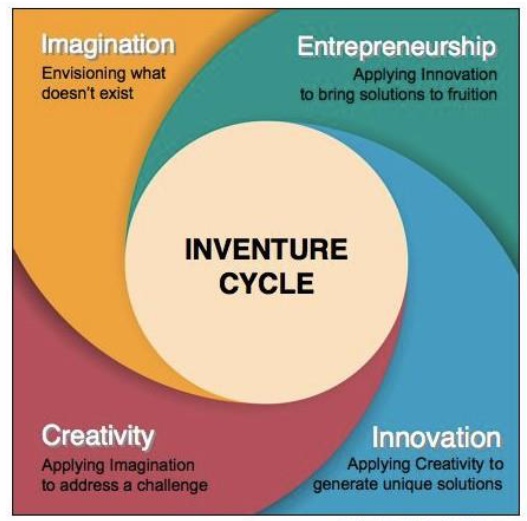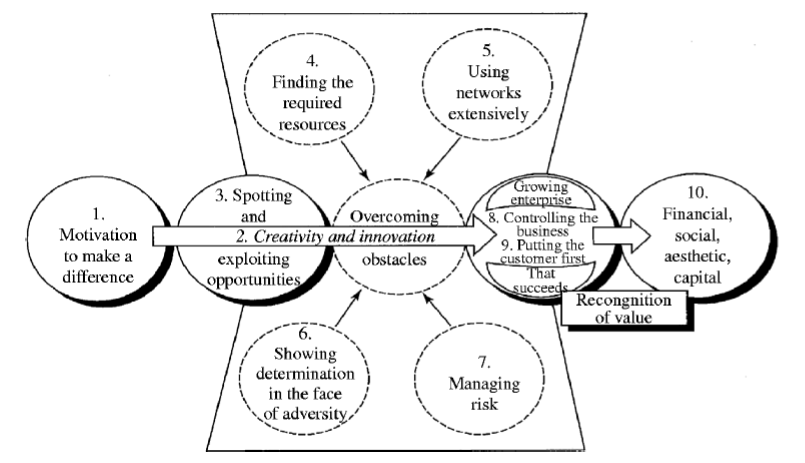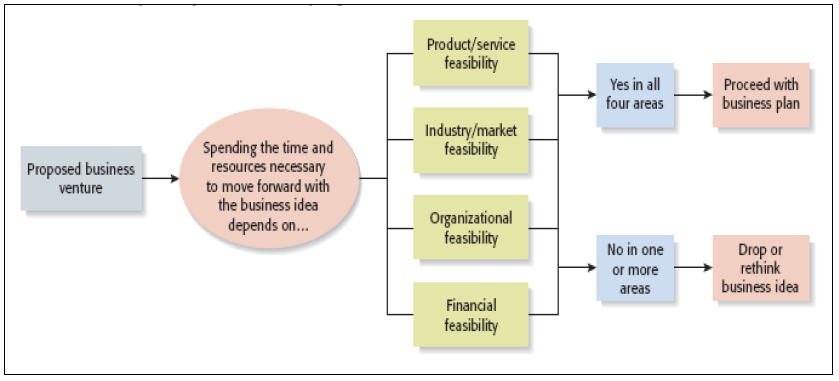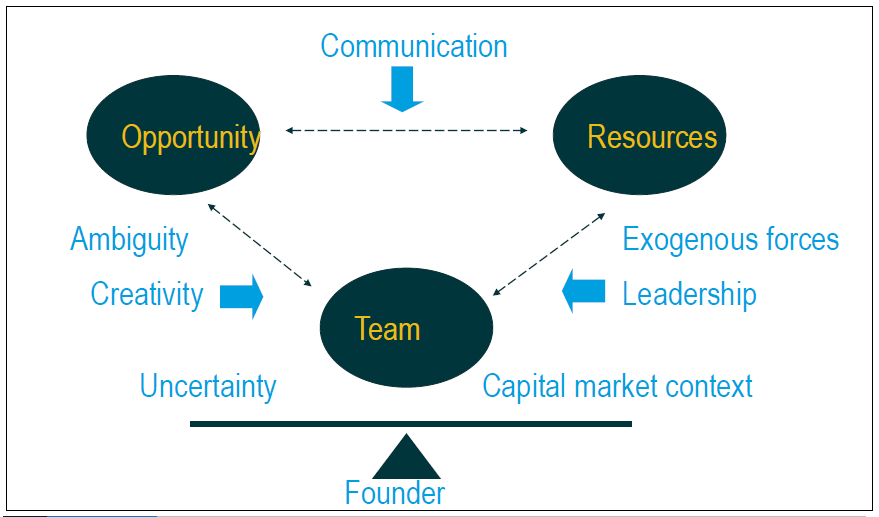Introduction
Entrepreneurship is a powerful approach that guides investors to identify potential areas for doing business. In most cases, entrepreneurial ideas emerge as a response to a unique challenge in the market. Most of the presented theories and models make it possible for investors to identify appropriate opportunities, acquire the relevant resources, and implement their ideas (Vogel, 2017). The proposed business concept is founded on the current issue of environmental sustainability. Over the years, organizational entities have been engaging in business models that leave little or no room for promoting the integrity of the natural environment. They acquire numerous resources without thinking about the wellbeing of future generations. The current idea seeks to introduce refurbished high-quality mobile phones in the market to prolong their lifespan and help reduce e-wastes and environmental degradation. In a nutshell, the idea is presented using the Lean Canvas below.
Fig. 1: Lean Canvas for the business concept
Channels
Research, Evaluation, and Final Decision
The proposed business idea is founded on the concept of entrepreneurship. In a study by Turnbull and Eickhoff (2011), the idea of an enterprise is defined as the process of making things or activities happen. To achieve the much needed results, experts involved need to present a revolutionary idea and consider new approaches to deliver the best results (see Fig. 1). Currently, many mobile phone manufacturers have established rigid supply chains that make it easier for them to identify and acquire scarce resources from different parts of the world. These approaches are designed to keep pace with the experienced competition arising from industry rivalry. The global mobile phone industry is characterized by an increasing number of players, including Apple Inc., Huwaei, Tecno, Nokia, Samsung, and Tesla. Other smaller companies delivering high-quality devices to their respective customers are emerging in different parts of the world.
Unfortunately, companies promote the current model in such a way that it lessens the lifespan of some of the produced mobile phones. Business entities are keen to phase out or stop supporting most of the mobile phones, thereby compelling more customers to purchase new versions. The proposed company relies on the attributes of entrepreneurship to influence a paradigm shift in the global mobile phone and handheld devices sector (Drosos et al., 2021). The model will ensure that unused or old phones are refurbished and available in the market. The business idea capitalizes on the increasing push for environmental sustainability. The idea also allows more people with low income levels to access high-quality mobile phones.
From the above analysis, it is agreeable that the targeted business firm is in accordance with the Inventure Cycle. To bring an idea to fruition, the involved team would need to follow a cyclic process characterized by imagination; entrepreneurship, creativity, and innovation (see Fig. 2). The concept of imagination helps the businesspeople to examine what could be problematic or missing in the selected region. For the present idea, it is notable that stakeholders in the mobile phones industry have not been taking the question of sustainability seriously. The concept of entrepreneurship would then apply whereby the process of refurbishment becomes revolutionary and capable of responding to the identified problem.

The third attribute of the Inventure Cycle is that of innovation whereby businesspeople would identify acceptable approaches to generate sustainable solutions. The proposed strategy is capable of delivering the much needed creativity and innovation. Without incurring numerous expenses, the move to acquire used devices and improving them amounts to innovation (Hussain et al., 2018). The businesspeople would remain creative to sensitize more people about the benefits of such devices and how they could help address most of their past experiences. Such users would find meaning in such affordable phones and be in a position to pursue their social and economic aims.

Another powerful framework that informs the proposed business idea is Bolton and Thompson (2003) framework (Burns, 2011). The model present ten unique steps that professionals can consider to make timely decisions and identify areas for continuous improvement (see Fig. 3). The first is applicable to the idea whereby the entrepreneurs intend to rely on the power of motivation to make a significant difference in the wider society (Kim & Choi, 2020). This phase would then be followed by creativity and innovation (Burns, 2011). Under this model, the experts will spot the existing opportunities in the market and how more people are willing to take the issue of environmental conservation to the next level (Fartash et al., 2018). Under this phase, the entrepreneurs would need to find the required resources and focus on the power of networking. The involved people would gather adequate funds and establish connections for acquiring most of the required mobile phones.
This achievement would help the involved entrepreneurs to exhibit the highest level of determination will mitigating emerging risks. They will examine the policy issues and laws that have the potential to affect their operations. They will also pinpoint some of the possible barriers to success as described in Bolton and Thompson (2003). Upon merging all the outlined aspects, the investors will consider how to control their venture while putting the needs of the customers first (Vogel, 2017). They will also come up with a unique brand that resonates with the expectations and goals of the targeted customers. With proper managerial practices and continuous assessment, the proposed venture would have increased chances of delivering the much needed results.
From these findings, it is evident that the existing factors predict a possible success for the proposed company. The move to pursue the idea is informed by the fact that the venture would be revolutionary in nature. The involved professionals will also be aware of the challenges and the needs of the customers. The problems of environmental degradation have become more pronounced. The rapid production and the move to phase out some of the mobile devices appear to be in line with the powerful force of capitalism (Lakhwani et al., 2020). These issues show conclusively that it would be necessary to support the “Go Decision/Proceed with Business Plan” as outlined in the Feasibility Analysis model (see Fig. 4). The entrepreneurs would need to analyze the feasibility of the idea in terms of organizational, financial, industrial, and product attributes. When done correctly, the venture is revolutionary and capable of delivering the projected profits.

The application of the Entrepreneur in the Process model would become the final approach upon the decision to pursue the business idea. From the above investigations, it is agreeable that the proposed business venture is plausible and helps address a systemic problem affecting the global society. The business model emerges as a simple approach capable of tackling a complex issue (Zainol et al., 2020). The involvement of the right people and the provision of the much needed resources will increase chances of success. As described in Lean Canvas, it is notable that a real opportunity exists in the selected market. This aspect is what supports the nature and success of the idea.

Relying on the Entrepreneur in the Process model, it is evident that the investors will acquire the much needed resources in a timely manner. The professionals would then form the best team whereby communication across units and followers would be critical (see Fig. 5). The application of exogenous forces would help deliver the much needed results (Farrukh et al., 2018). For instance, effective leadership would be needed to guide all the followers while allowing them to remain creative. The venture will then need to examine the context of the capital market while remaining prepared for possible uncertainties. The selected model will help the founder oversee most of the activities and ensure that they are capable of delivering the needed results. The concept of continuous improvement founded on effective leadership would increase chances of pursuing the business ideas. These aspects show concussively that the new business idea will have higher chances of succeeding.
Critical Reflection on Learning
The principles of innovation and creativity appear to guide the formulation and launch of the proposed business idea. The whole essence of any business venture is to generate concepts and processes that can help meet a unique demand in the market or wider society. The presented idea needed to be powerful and capable of improving the overall experience of the customers (Zhou et al., 2020). When done correctly, the move to launch the refurbished phones in the market would present a competitive advantage. The existing rival business would find it hard to match this specific idea since it has a renewed approach to environmental sustainability. In different regions, many people are finding it hard to afford new mobile phones due to the costs associated with them (Khan et al., 2021). The business venture is capable to meet these needs while empowering more potential to pursue their goals. This innovative venture is, therefore, plausible and capable of presenting something new that is capable of delivering a specific outcome.
The proposed business venture is founded on the 4Ps of innovation. This framework starts with the product or service intended to meet the demands of the customers. The business would begin by considering the intended products and the subsequent services associated with selected phones (Mazla et al., 2019). The organization would be focusing on the gaps in the market today and capitalize on them. The second attribute of position it will guide the proposed business to create a unique story that most of the identified clients could associate with (von Arnim & Mrozewski, 2020). The next element is that of process and it will define the manner in which the product needs to be created and promoted to deliver the intended promise to the customers. The mental model is the fourth and it describes the overall activities of the organization and the wider strategy of achieving most of the intended goals.
The outlined frameworks in the discussion above reveal that the application of different concepts could help deliver the much needed results. The involved entrepreneurial team will need to apply such techniques and tools to aid in the decision-making and ensure that the venture is implemented successfully (Kusumawijaya, 2020). From this analysis, it is agreeable that the studied learning materials are informative and have the potential to guide investors to pursue their goals diligently.
Conclusion
Environmental degradation has become a common challenge affecting the global community. Human beings are presently focusing on actions that can promote sustainability. The proposed business venture meets the minimum threshold for a creative and innovative idea. The intended refurbished phones would promote sustainability while allowing customers to enjoy reduced prices. The consideration of the outlined models and concepts is therefore, plausible and capable of supporting the launch of a new business successfully and efficiently.
References
Burns, P. (2011). Entrepreneurship and small business (3rd ed.). Palgrave Macmillan.
Drosos, D., Kyriakopoulos, G. L., Gkika, E. C., Komisopoulos, F., Skordoulis, M., & Ntanos, S. (2021). Managing change and managerial innovation towards employees’ satisfaction at workplace. EM Journal, 10(2), 597-606. Web.
Farrukh, M., Alzubi, Y., Shahzad, I. A., Waheed, A., & Kanwal, N. (2018). Entrepreneurial intentions: The role of personality traits in perspective of theory of planned behaviour. Asia Pacific Journal of Innovation and Entrepreneurship, 12(3), 399-414. Web.
Fartash, K., Davoudi, S. M. M., Baklashova, T. A., Svechnikova, N. V., Nikolaeva, Y. V., Grimalskaya, S. A., & Beleborodova, A. V. (2018). The impact of technology acquisition & exploitation on organizational innovation and organizational performance in knowledge-intensive organizations. EURASIA Journal of Mathematics, Science and Technology Education, 14(4), 1497-1507. Web.
Hussain, S. T., Lei, S., Akram, T., Haider, M. J., Hussain, S. H., & Ali, M. (2018). Kurt Lewin’s change model: A critical review of the role of leadership and employee involvement in organizational change. Journal of Innovation & Knowledge, 3(3), 123-127.
Khan, A. W., Khan, M. U., Khan, J. A., Khan, J., & Gul, W. (2021). Identification and prioritization of security challenges of big data on cloud computing based on SLR: A fuzzy-TOPSIS analysis approach. Journal of Software: Evolution and Process, 33(12), e2387.
Kim, J., & Choi, S. O. (2020). The intensity of organizational change and the perception of organizational innovativeness; with discussion on open innovation. Journal of Open Innovation: Technology, Market, and Complexity, 6(3), 66-79. Web.
Kusumawijaya, I. K. (2020). Understanding entrepreneurial intention: The prediction of entrepreneurial behavior. International Review of Management and Marketing, 10(4), 35-42. Web.
Lakhwani, M., Dastane, O., Satar, M. S. M., & Johari, Z. (2020). The impact of technology adoption on organizational productivity. Journal of Industrial Distribution & Business 11(4), 7-18. Web.
Mazla, M. I. S. B., Jabor, M. K. B., Tufail, K., Yakim, A. F. N., & Zainal, H. (2019). The roles of creativity and innovation in entrepreneurship. Advances in Social Science, Education and Humanities Research, 470(1), 213-217. Web.
Turnbull, A., & Eickhoff, M. (2011). Business creativity – Innovating European entrepreneurship education. Journal of Small Business and Entrepreneurship, 24(1), 139-149.
Vogel, P. (2017). From venture idea to venture opportunity. Entrepreneurship Theory and Practice, 41(6), 943-971.
von Arnim, L., & Mrozewski, M. (2020). Entrepreneurship in an increasingly digital and global world. Evaluating the role of digital capabilities on international entrepreneurial intention. Sustainability, 12(19), 7984-8003.
Zainol, N. U., Kowang, T. O., Hee, O. C., Fei, G. C., & Kadir, B. Bin. (2020). Managing organizational change through effective leadership: A review from literature. International Journal of Academic Research in Business and Social Sciences, 11(1), 1–10. Web.
Zhou, J., Xu, X., Li, Y., & Liu, C. (2020). Creative enough to become an entrepreneur: A multi-wave study of creative personality, education, entrepreneurial identity, and innovation. Sustainability, 12(10), 4043-4058. Web.